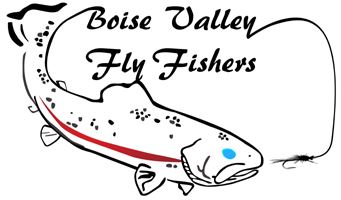
The Blackhurst Tactical Caddis came about from my love of the insect and spending lots of time on the Boise River fishing Caddis hatches, and being very successful at it. I entered a fly tying competition a few years ago and ended up winning 1st place. The competition was through Orvis, which had just come out with their new Tactical hooks, and they put it on that hook with my name and the rest is history. I tie this fly in s16, which seems to be the best size for this pattern, though I do use s12 and s10, on the flies I tie, I will add antenna. Some may know that when Caddis hatch, it is a quick process. Once they break the surface, they pop out of their pupal shuck and fly off, unlike a Mayfly that takes its time, slowly crawling out of the shuck, waiting for their wings unfurl and dry before they fly off. So Trout have learned that they better be quick if they are going to have a Caddis meal…so Caddis emerges, when fished correctly, can lead to a lot of action
Recipe
Hook: Any emerger hook. I use a Caddis emerger hook
Thread: 8\0 tan…or color of choice
Body: tan or brown Hares Ear hair. Here you can use any color to match the hatch
Rib: v -rib. I use size – midge Then brush the hair to make it buggier and more into a pupal-cycle
Underwing: 3 individual CDC. 2 brown or Caddis dun and 1 tan CDC or ….2 tan CDC and 1 brown or Caddis dun CDC
Overwing: deer hair in lightish brown or your favorite. Tie in a little longer than the underwing.
Antenna: horse hair or moose hair. I usually leave mine long, like twice the length of at least the body
Thorax: Fox Squirrel dubbing hair - buggier the better This hair, I use in a split thread technique
Directions
- I recommend using barbless hooks in at least a curved hook type. I use a Caddis emerger hook. Put the hook in the vice.
- Starting at the back of the thorax start your thread. After getting thread secured wrap in your v-rib material. Continue down the hook slightly below the bottom of the arc of the hook. Stop there and do a slightly loose dubbing ball.
- Keep the body sparse, thin. Using your thumb and pointing fingers, brush the body hair forward to the of back of thorax area.
- Counter wrap the v-rib up and stopping at the back of the thorax area. Tie off the v-rib and cut there.
- Tie in the 3 CDC configuration in the recipes section. Tie in here. Try to keep the tie-in area clean. Tie the CDC feathers down, snip off here.
- Tie in the deer hair. Make sure you keep this area clean. Make sure you have like deer hair tied in without the hair fanning out too much. It should be just over the CDC feathers. Snip the butt ends of the deer hair off. The area just tied in, the CDC and deer hair, should not be into the thorax area very much.
- You need the larger thorax area. Use the split-thread or loop technique here. Spin up the Squirrel hair…buggier the better, and why you want to leave the antenna hair long in the beginning, so it didn’t get lost in the Squirrel dubbing. End just behind the antenna, then jump up under the antenna and whip finish.
- I like a buggy thorax, so I brush it out.
Get out and have a good, safe outing.


